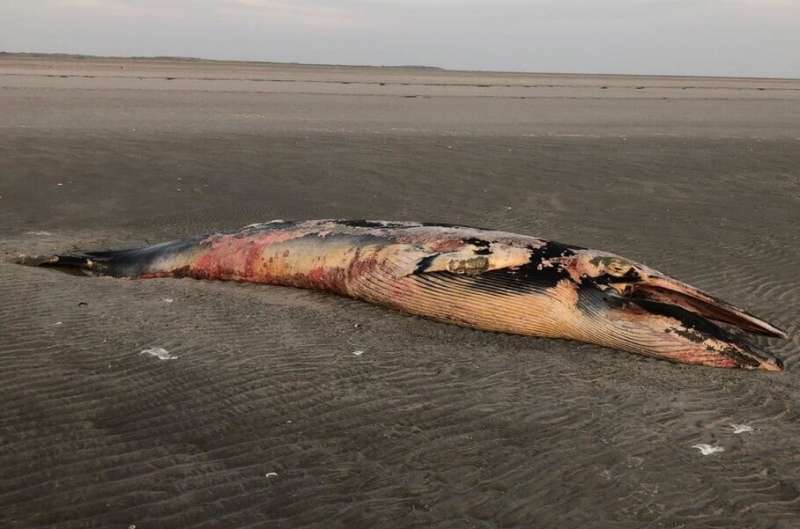
A total of 21 new beetle species were discovered in the whale carcass that washed ashore at the Rottumerplaat in 2020. The creatures are experts in consuming meat, skin and bones.
This is one of the outcomes of the field study commissioned from Wageningen Marine Research by the Directorate-General of Public Works and Water Management (Rijkswaterstaat).
The dead minke whale was found on the uninhabited Wadden island Rottumerplaat by the Ministry of Agriculture, Nature and Food Quality's (LNV) Wadden Unit in 2020. The remains were deposited at a suitable site on the island in consultation with Rijkswaterstaat and the National Forestry Service (Staatsbosbeheer).
This offered a unique opportunity to study the decomposition of the whale carcass and the impact thereof on nature. Moreover, it is in keeping with the goals of Rijkswaterstaat and other nature conservationists of the Wadden Sea to strengthen the natural processes in the area.
No feast for birds
During a seven-month period, the researchers took samples and deployed beetle traps. In addition, field cameras monitored the comings and goings around the carcass. Various birds were attracted to it. "Mostly 'common' species, such as crows, magpies and great black-backed gulls. Still, it was not a feast for birds, as the whale's skin proved too thick for the birds' beaks," says WUR ecologist Martin Baptist.
New beetle species
After half a year, beetles began to appear. The carcass attracted a total of 57 different beetle species, including the sexton beetle and the shore sexton beetle. Large numbers of skin-eating, bone-gnawing and carnivorous beetles were identified. A total of 21 species were found that had not been previously sighted on the Rottumerplaat. Most probably some of these beetles flew in from the mainland, attracted by the scent of the carcass.
Stench
A decomposing carcass can produce a vile odor. There was never a high level of nuisance, however. Notwithstanding, the scent lingered on some days, making a prolonged visit to the area unpleasant.
Missing link ecosystem
The outcome is an eye-opener, says project leader Rick Hoeksema of Rijkswaterstaat: "A carcass of this size is usually disposed of. Now, we see that it has a function in the ecosystem. Not entirely surprising, but seeing it function as such in practice is special."
Another remarkable result is the overwhelming amount of nutrients found in the soil surrounding the carcass. Hoeksema: "It even resulted in die-off of vegetation as a result of an overdosage in nutrients." Hoeksema is eager to learn how the soil nutrient level develops in the coming years. Follow-up studies are needed.
Cadmium pollution
The minke whale carcass has not polluted the soil with cadmium. Soil samples taken on the Rottumerplaat showed no increase in the total cadmium levels. This may be explained by the fact that the whale was young and therefore was unable to bio-accumulate cadmium in the body yet. Cadmium pollution is a key reason why whale carcasses are normally disposed of.
Future carcasses
In its recommendations, the study suggests leaving beached whale carcasses to decompose in the Wadden Sea more frequently in the future. However, this can only be done in suitable locations that pose no threat to naval traffic, and sufficiently far from human settlements to prevent odor. Rijkswaterstaat will consult with other parties on this recommendation for future practices.
Explore further
Citation: Whale carcass proves tasty snack for beetles (2022, May 16) retrieved 16 May 2022 from https://ift.tt/R6Gdx8n
This document is subject to copyright. Apart from any fair dealing for the purpose of private study or research, no part may be reproduced without the written permission. The content is provided for information purposes only.
"tasty" - Google News
May 17, 2022 at 03:44AM
https://ift.tt/R6Gdx8n
Whale carcass proves tasty snack for beetles - Phys.org
"tasty" - Google News
https://ift.tt/3vOqMyb
https://ift.tt/gMzpL5F
Bagikan Berita Ini














0 Response to "Whale carcass proves tasty snack for beetles - Phys.org"
Post a Comment